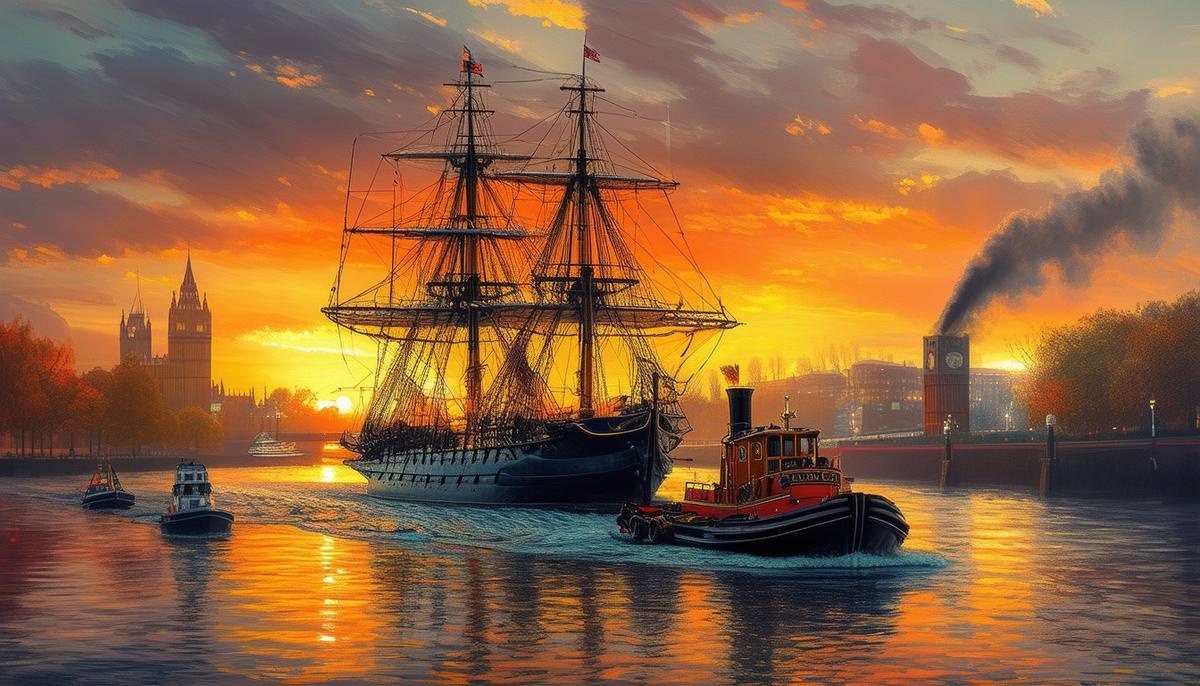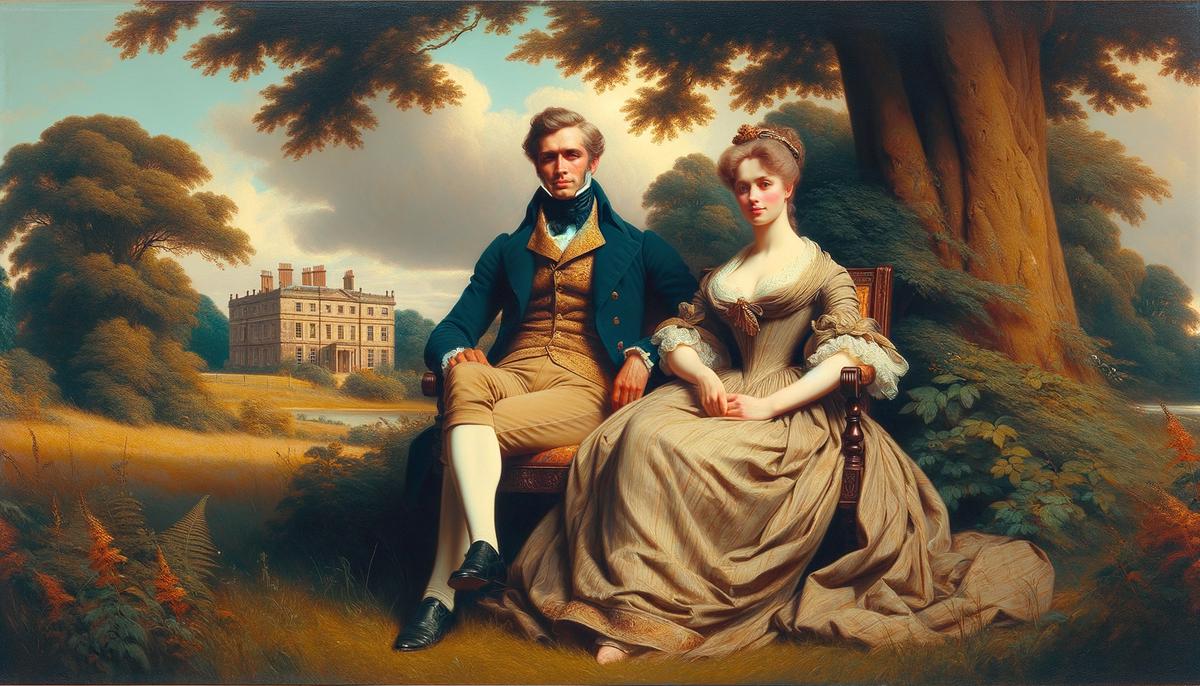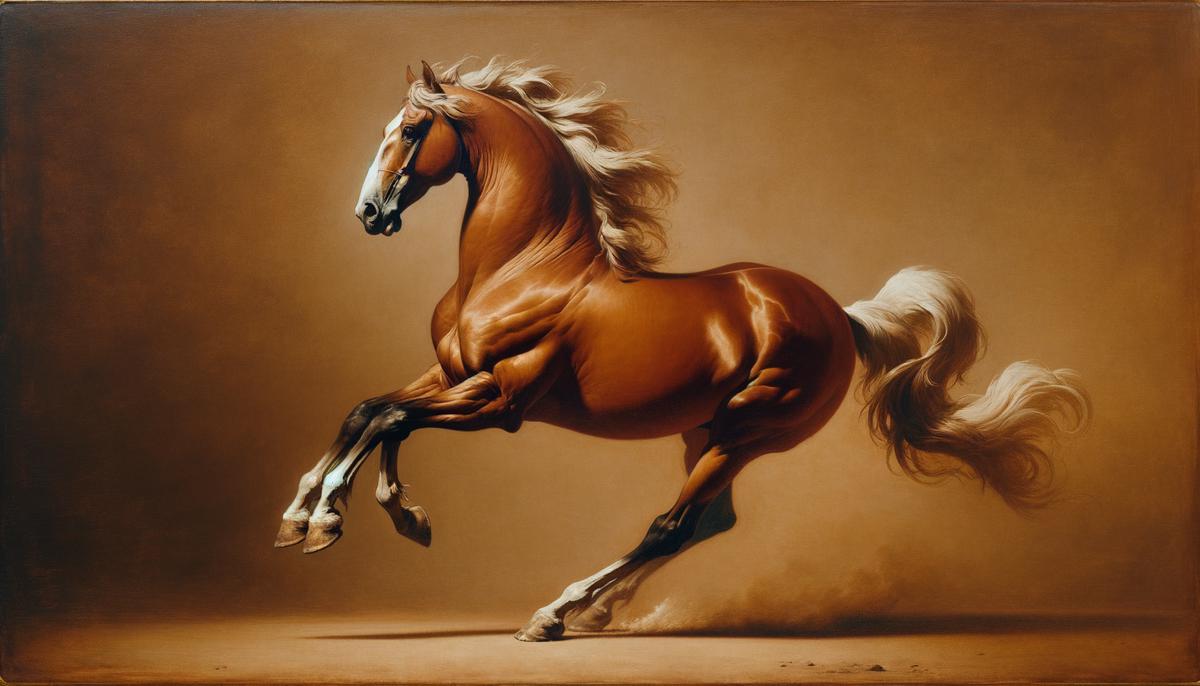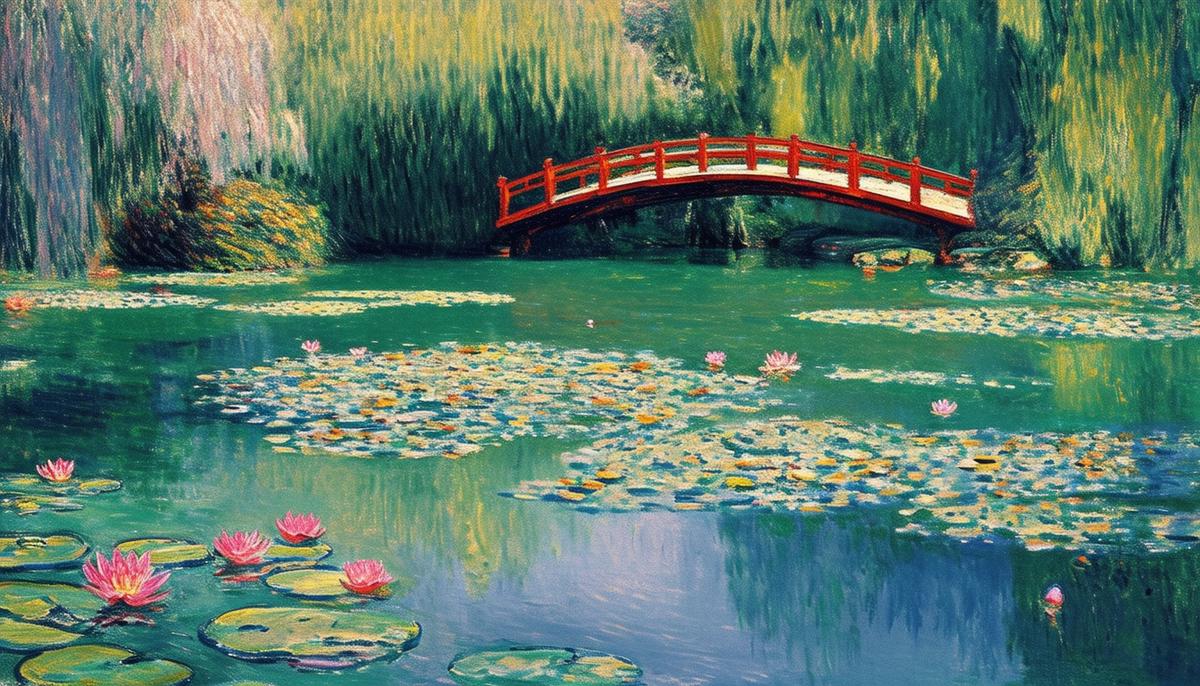1. The Fighting Temeraire at The National Gallery
Joseph Mallord William Turner's "The Fighting Temeraire" at London's National Gallery portrays the final journey of the revered warship Temeraire as it is towed to be broken up after serving in the Battle of Trafalgar. Turner's expertise in depicting natural elements is evident in this oil painting, where the interplay of light on water and sky creates a compelling atmosphere. The contrast between the aging wooden ship and the industrious tug symbolizes the transition from the age of sail to the industrial era, evoking a sense of nostalgia and resignation to progress.
Turner's blend of maritime detail and dramatic lighting invites viewers to contemplate the broader impacts of technological advancement. The painting's narrative depth and ability to evoke reflection through the interplay of light and theme make it one of Britain's most celebrated artworks. "The Fighting Temeraire" continues to resonate with audiences, highlighting the dualities of progress and sacrifice.

2. Sunflowers at The National Gallery
Vincent van Gogh's 'Sunflowers' at The National Gallery showcases the artist's signature style, with vibrant yellows, oranges, and browns swirling across the canvas. Each sunflower, rendered in thick, expressive brushstrokes, seems to possess a life force of its own. The painting explores the cycle of life and the inevitability of decay, elevating the floral subject into a commentary on the transient nature of beauty.
As visitors engage with 'Sunflowers,' they are drawn into a dialogue about resilience and the passage of time. The tangible textures and bold colors invite viewers to explore Van Gogh's mind and his determination to capture the simplicity and depth of nature. 'Sunflowers' is more than a painting; it is a philosophical exploration that encourages reflection and resonance with the artist's vision.
3. Bathers at Asnières by Georges Seurat at The National Gallery
Georges Seurat's 'Bathers at Asnières' at The National Gallery showcases the artist's innovative Pointillist technique, challenging traditional brushwork of the time. The painting depicts young men relaxing and bathing along the river Seine, composed of countless tiny dots that blend together when viewed from a distance. Seurat's masterful use of light and color creates a serene riverscape, while the inclusion of factory smokestacks hints at the encroaching industrial modernity.
Despite the painting's peaceful appearance, it subtly explores themes of isolation and solitude within communal settings. Engaging with 'Bathers at Asnières' offers an appreciation for Seurat's contributions to color theory and his meticulous technique. The artwork invites viewers to contemplate the relationship between leisure and alienation during the industrial age, masterfully captured in a shimmering palette that reflects the heat, water, and the intrusion of modern life.
4. Mr and Mrs Andrews at The National Gallery
Thomas Gainsborough's 'Mr and Mrs Andrews' at The National Gallery combines portraiture and landscape painting, depicting the aristocratic couple Robert and Frances Andrews against the backdrop of their Suffolk estate. The painting's remarkable detail in the couple's fashionable attire and the lush landscape is complemented by an intriguing unfinished area on Mrs. Andrews' lap, sparking curiosity about the artist's intentions.
Gainsborough's work subtly comments on the social boundaries and disparities between the wealthy landowners and the laborers who work the land. The couple's serene expressions and the pastoral setting hint at the complexities of their relationship and the limitations of wealth in fulfilling personal desires. 'Mr and Mrs Andrews' exemplifies the tensions of the Enlightenment era, balancing the celebration of human achievement with a critical examination of sociocultural dynamics.
As visitors engage with the painting, they are encouraged to consider not only what is visible but also what is left unseen. Gainsborough's masterpiece stimulates both aesthetic appreciation and intellectual reflection, inviting ongoing dialogue between the past and present.

5. The Arnolfini Portrait at The National Gallery
Jan van Eyck's 'The Arnolfini Portrait' at The National Gallery offers a captivating glimpse into the life of Giovanni di Nicolao Arnolfini and his wife, showcasing their wealth and status in 15th-century Burgundian Netherlands. The painting's meticulous attention to detail, from the intricate fabric textures to the precise rendering of everyday objects, demonstrates Van Eyck's exceptional skill and dedication to realism.
Beyond its visual splendor, 'The Arnolfini Portrait' is rich in symbolism. The convex mirror in the background captures tiny reflections of the room and additional figures, hinting at the presence of the artist or the viewer's own involvement in the scene. The couple's enigmatic poses and expressions invite speculation about their personal lives and the cultural expectations of their time.
The painting's symbolism extends to seemingly minor details, such as:
- The single lit candle in the chandelier, which may allude to spirituality or the fleeting nature of life
- The fruit by the window, representing wealth and the transience of earthly pleasures
'The Arnolfini Portrait' celebrates marital union and material success while prompting questions about individual identities and the societal roles of the emerging bourgeois class.
Engaging with this masterpiece at The National Gallery is an opportunity to delve into the intricacies of 15th-century life and to unravel the layers of meaning embedded in every carefully placed element. 'The Arnolfini Portrait' invites viewers to participate in an ongoing dialogue that bridges the gap between the past and the present, offering insights into the human experience across time.
6. The Ambassadors at The National Gallery
Hans Holbein the Younger's 'The Ambassadors' at The National Gallery is a captivating double portrait of Jean de Dinteville and Georges de Selve from 1533. The painting offers a feast for the eyes and mind, showcasing the opulence of the era while also incorporating the motif of memento mori.
Holbein constructs a vivid tableau of educated nobility surrounded by their diplomatic trappings. The elaborate oriental rug, luxuriant fabrics of their garments, and a detailed collection of scientific instruments reflect an air of scholarly prestige—an exaltation of human achievement and earthly power. Every item is thoughtfully chosen to echo the worldly and spiritual pursuits of intellectual expansion during the age of exploration.
The most captivating and unsettling element is the skewed shape at the painting's base. This anamorphic skull brilliantly serves as a masterstroke of visual perception and a somber reminder of life's ephemeral nature. It subtly undermines the overtones of opulence and the ambassadors' air of importance, creating a poignant contrast that whispers echoes of vanity's futility amidst mortal constraints.
The ornate lute with a broken string placed near scholarly tomes and a celestial globe underscores the constant presence of imperfection and strikes a chord discussing the harmony—and occasionally, the discord—between scientific inquiry and spiritual contemplation.
'The Ambassadors' showcases Holbein's magnificent craft in hyper-realistic depiction and embodies a profound narrative layering. It encourages viewers to ponder the complexities of human ambition against the stark reality of life's swift passage, inviting them to unravel historical truths woven into a magnificent canvas.

7. The Hay Wain by John Constable at The National Gallery
John Constable's 'The Hay Wain' at The National Gallery offers a serene snapshot of bucolic England at its most picturesque. Painted in 1821, this oil on canvas brings to life the daily meanderings of rural Suffolk, specifically featuring the Stour River. It encapsulates the essence of early 19th-century English countryside.
"The Hay Wain" showcases Constable's ability to capture the atmospherics of a place, lending viewers a sense of the overwhelming serenity that arises from a scene untouched by the clatter of the coming Industrial Age. Nature is the protagonist, expressing its narrative through a palette rich with earthy greens, profound blues, and muddy browns.
The painstaking detail Constable imbues every element with—from the lazily floating clouds mirrored in the river's glassy surface to the play of sunlight piercing through the leafy boughs—garners further allure. This depiction goes beyond mere pictorial accuracy; it evokes the warmth of the sun and the brisk country air. Such authenticity was revolutionary at that time and helped cement Constable's pioneer status among naturalist painters.
The wagon, center stage in this idyll, serves both a literal and metaphorical purpose. While part of the rural scene, it also stands as a symbol of pastoral life and its cyclical reliance on nature—a testament to rural labor's unsung rhythm, subtly steering away from agrarian idealization to a more nuanced narrative about symbiosis between man and nature.
Witnessing 'The Hay Wain' in The National Gallery spans more than seeing an iconic work of art. It serves as a temporal vista into the past, presenting a dialogue between then and now regarding how much has changed and yet remains profoundly the same within the English countryside.
8. Whistlejacket at The National Gallery
In the aisles of The National Gallery, George Stubbs' famous 'Whistlejacket' commands attention with its stark, unadulterated homage to equine grace. Stripped of the traditional trappings typically found in equine portraiture of nobility or battle scenes, all that remains is the massive figure of the horse—solitary, rendered on a nondescript background that calls forth nothing but its own pristine form.
Whistlejacket is captured mid-rear, legs sprawled as if bolting into life's exigent sprint. This regal beast, revered for his verve and sporadic thrashing victories, embodies an energy where silent animation synergizes with temerarious tranquility.
Stubbs, an artist intricately wired to the impulses of raw naturalism and a devotee of anatomical precision, studied equine subjects with a scientific tenacity. His brushwork paints not just the sheen of a healthy coat or the muscular flaunt of a prime racehorse, but it captures the inherent nobility—perhaps the very soul—of the cherished steed.
Confrontational yet intimate, Whistlejacket's soft yet electrifying gaze meets the spectator's with a conjured wind—one carrying the dull thuds of hoofbeats across the verdant British landscape. Each stroke builds upon this vision of controlled wilderness, inviting viewers to a kinetic standstill of appreciation—where marvel wrestles with beauty and dances with interrogative brushes on what Art ought to reflect in its purest forms.
The result is an exemplar of focused artistry rendering visible what many fail to articulate—the silent node of connection between human and beast dictated not through a saggy narrative prevalent in much of Stubbs' era but through an immersive, quiet stance that whistles glamour as solidly as it does existential truth.
Thus stands 'Whistlejacket' in stoic dignity—an emblem of artistic rebellion against gilded frames of state and stoic pause, a lonely yet fiery spirit decked in amber fire glow brushing against its sinews.

9. The Virgin of the Rocks by Leonardo da Vinci at The National Gallery
Leonardo da Vinci's 'The Virgin of the Rocks' at The National Gallery elevates the exhibition space through its profound aura and complex composition. Enveloped in a somber yet mesmerizing landscape, the painting presents an intimate portrayal of the Madonna with the Christ Child, along with the infant John the Baptist and an angel, each figure enjoying an almost supernaturally serene interaction.
Nestled in a rocky cavern that seems just as heavenly as earthly, the figures are draped in soft, shadowy lights, manifesting Leonardo's superior handling of light and shade—a method known as chiaroscuro. This technique, coupled with sfumato, allows for tones and colors to shade gradually into one another, producing softened outlines or hazy forms that magnificently capture delicate human expressions. These techniques elevate the ethereal quality of the painting, drawing viewers into a sacred yet mysterious realm.
The configuration of these holy visitors interacts gracefully with the rugged terrain around them, symbolically bridging the divine with the natural world. This incorporation of nature and demand for depth and perspective charted a course that veered away from more conventional religious illustrations of the time. By placing these figures within a complex geological backdrop rather than a heavenly plain, Leonardo brings these sacred narratives into a more approachable, humanly tangible plane.
Connoisseurs and casual appreciators alike are drawn to this painting's visual mastery and to the enigmatic smiles, particularly manifested by the angel, which hold an intensity paralleling that of Mona Lisa's famous smirk, thought to impart wisdom and solace withheld behind gentleness—a Leonardo trademark hinting at hidden knowledge and secrets concealed within plain sight.
'The Virgin of the Rocks' invites layers of interpretation that span beyond aesthetic admiration towards metaphysical and existential spheres. As witnesses to this enigmatic spectacle, visitors are plunged into a reflective examination concerning celestial mysteries and Leonardo's ambitious stride to portray divinity anchored in earthly bounds, making the artwork a pivotal conversation piece and a testament to the universal appeal of profound beauty combined with intellectual intricacy.
10. The Water-Lily Pond by Claude Monet at The National Gallery
As one strolls through The National Gallery, it's almost impossible not to be drawn into the immersive universe of Claude Monet's luminescent 'The Water-Lily Pond'. This masterpiece inspects the subtle play of light across a tranquil pond, anchored by a wooden bridge that cuts gracefully across the canvas—a simple yet stirring addition that charms any beholder into the lushness of Monet's Giverny paradise.
'The Water-Lily Pond' stands out with its vibrant blues and greens meshing with reflections and ripples in the water, creating a dreamlike vista that skirts the line between realism and abstraction. Far more than just aesthetic captivation, this piece explores Monet's obsession with the forces of nature and his ambitious attempt to capture them on canvas—a pioneering pursuit in the Impressionist movement. By documenting the changing conditions of light and color in his garden pond, Monet immortalizes fleeting moments, transforming them from fleeting to eternal.
Monet uses the bridge not as merely another element, but almost as an actor in its own right—part of the living tableau, interacting with light, shadow, and seasons. In what could be perceived as a static feature within the rush of nature's pulses, the bridge stands firm, providing both a contrast and a companion to the fluid dance of water lilies below.
'The Water-Lily Pond' is tantalizingly dialogic: it asks of its viewers to perceive the unseen—to reflect on what ripples underneath and the interdependence between the constructed and the natural world. There's an ecological and temporal resonance in how a man-made structure like the bridge integrates so seamlessly into nature, a reflection poignant in today's ecological dialogues.
Spending time in front of 'The Water-Lily Pond', one feels invited by Monet to linger, to visually and intellectually explore the pond's depths, contemplating both the scene's overt beauty and its more submerged meanings. It is as if Monet invites us, through this archetypal pavement of leaves and blooms on water, to walk with him on a path marked by reflection both literal and metaphorical.
'The Water-Lily Pond' transcends its impressionistic roots to reveal itself as a resonant pond indeed—one reflecting not only sky and foliage but the faces of ourselves, our changed and changing selves reflectively gazing back at us, water-charmed for that gaze-bound moment within The National Gallery's profound offering.

'The Water-Lily Pond' by Claude Monet is more than a study of light and shadow; it invites us to reflect on the connections between nature and ourselves. This piece, housed in The National Gallery, encourages contemplation of both the beauty before us and the deeper meanings it holds.
Monet's masterful use of color and texture creates a sense of tranquility and harmony in the painting. The delicate water lilies floating on the pond's surface seem to dance with the gentle ripples, while the Japanese bridge in the background adds a touch of exoticism and mystery. The lush foliage surrounding the pond envelops the viewer, creating a sense of immersion in the natural world.
Beyond its aesthetic appeal, 'The Water-Lily Pond' also serves as a metaphor for the human experience:
- The water lilies, with their roots anchored in the pond's depths and their flowers reaching towards the light, symbolize our own journey of growth and self-discovery.
- The bridge represents the path we must traverse to connect with others and with the world around us.
- The interplay of light and shadow on the water's surface reminds us of the ever-changing nature of life and the importance of finding moments of peace and reflection amidst the chaos.
As we gaze upon Monet's creation, we are reminded of the profound impact that nature can have on our well-being and the importance of preserving and cherishing the natural world. 'The Water-Lily Pond' is not merely a painting; it is an invitation to pause, to reflect, and to find solace in the beauty that surrounds us.





















